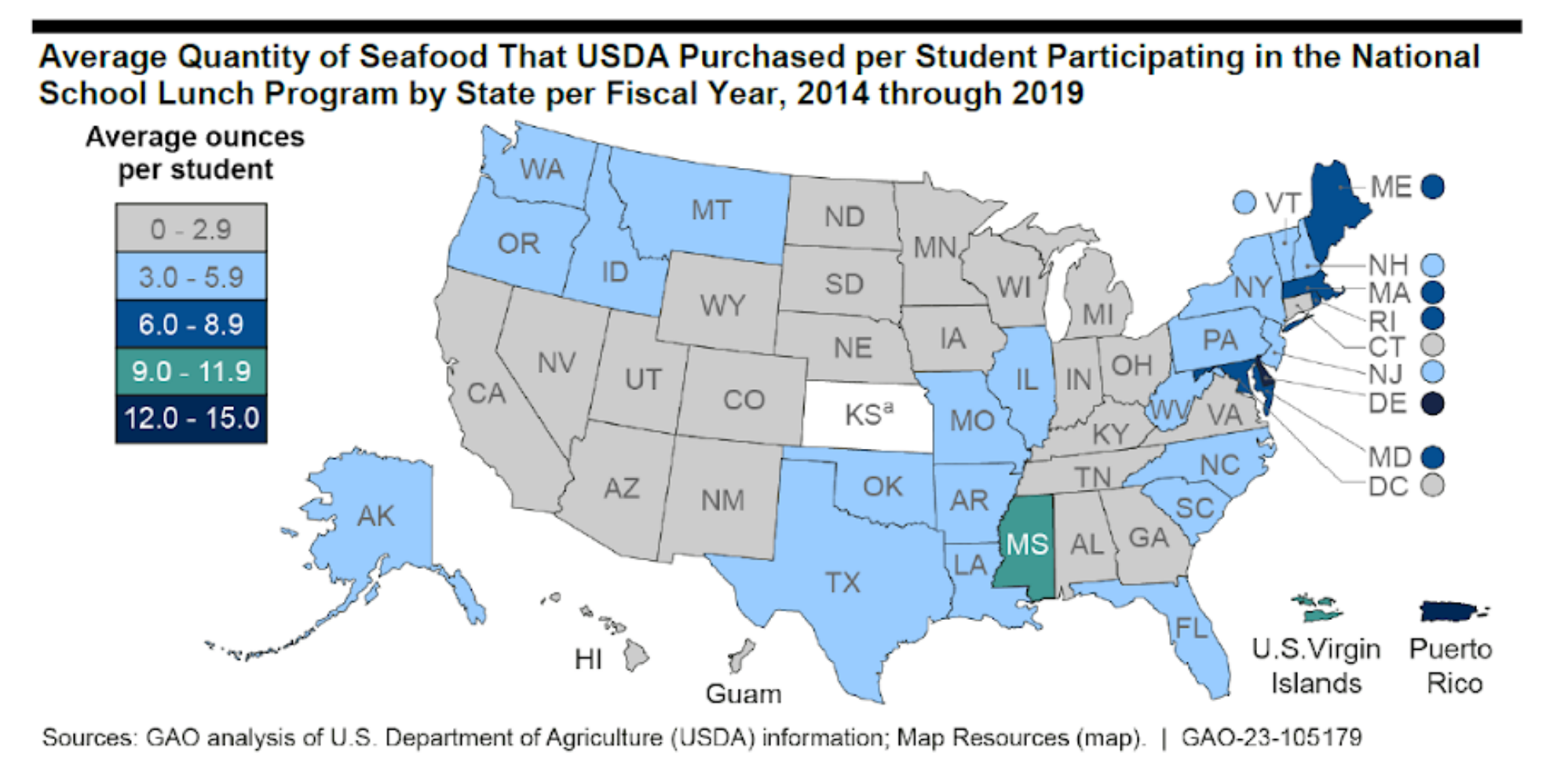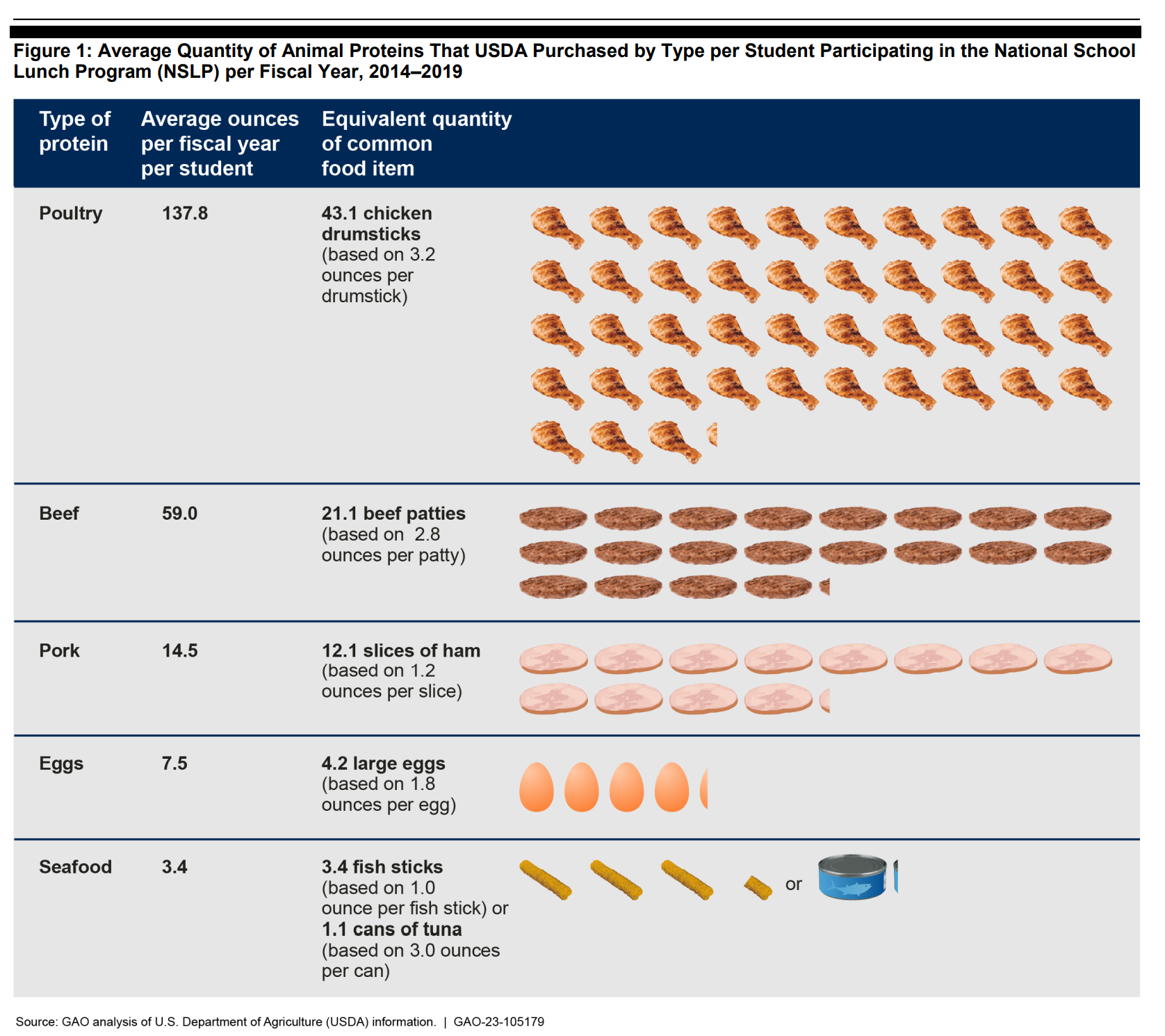Today, the US Government Accountability Office released a report, GAO-23-105179, “National School Lunch Program: USDA Could Enhance Assistance to States and Schools in Providing Seafood to Students.”
Seafood Nutrition Partnership President Linda Cornish was interviewed by the GAO as part of the audit for this report on the National School Lunch Program.
Report Findings:
- Dietary guidelines say school-age children should eat 4-10 oz. of seafood per week.
- USDA purchased for the National School Lunch program is about 3 oz. of seafood per student per year in FYs 2014-19.
- Seafood made up just 1-2% of all animal proteins that USDA purchased for the program (about 3 oz. per student per year) in FYs 2014-19.
- Intrafish Article: Watchdog report on federal food purchasing shows US students eating three fish sticks per year, but 43 chicken drumsticks


Seafood Nutrition Partnership Statements:
- We applaud Senators Baldwin, Merkley, and Reed for requesting this review and shedding light on the extreme and unfathomable disparity between the amount of seafood that students should be consuming per the USDA Dietary Guidelines and the actual amount of seafood provided in school meals.
- The U.S. Department of Agriculture’s National School Lunch Program provides healthy meals to millions of kids from low-income households.
- We as a nation should be shocked and alarmed by the huge disparity between our nation’s nutrition guidelines and policies and how it is actually implemented in our national school nutrition programs.
- What we eat matters for our health and the health of our students. All school foodservice decision makers and providers should read this report carefully and with urgency.
- Seafood Nutrition Partnership and our partners are eager to work with the USDA and NOAA to develop actionable plans as recommended by the US GAO report GAO-23-105179 on the National School Lunch Program.
- Education and outreach to schools and parents to address barriers to seafood in schools should include:
- Latest science on the safety and essential health benefits of seafood
- How to purchase within school lunch program budgets and share successful examples from school districts around the country
- How to train team members to prepare seafood with existing kitchen equipment
Seafood’s Health Benefits for Growing Students:
- The FDA, USDA, and Dietary Guidelines Advisory Committee all recognize the health benefits of consuming seafood for brain and heart health.
- The brain’s main building blocks are fat, and mostly omega-3s DHA and EPA. As calcium is to the bone, omega-3 DHA is to the brain.
- Studies show that when students eat seafood per the dietary recommendations, they feel calmer, less anxious, and perform better in school.
- SNP offers free resources for how to serve more Seafood In Schools:
- Watch short video on how to Build Lifelong Seafood Consumers through Seafood In Schools https://youtu.be/9uGXM4jtCUE
- Utilize the 5 Simple Steps to Successfully Serve Seafood In Schools
- Try the School Lunch Program Ready Seafood Recipes, handouts for parents, kids’ activity booklet, and posters for the school cafeteria.



Leave a Reply